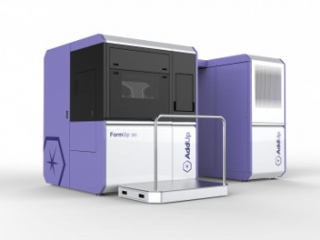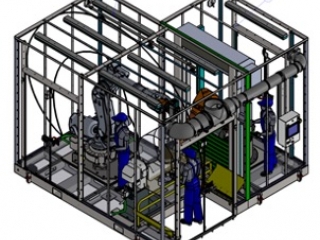Paris-Saclay additive manufacturing
Goal
FAPS' objective is the creation of an additive manufacturing facility of international scope on Paris-Saclay campus. The project will allow processes control, breakthrough solutions and will contribute to the development and spread of new product design and manufacturing based on AM. Various Paris-Saclay University's laboratories are already working on this method, then the FAPS project aims at putting together and enhance the experimental facilities, federate the endeavors and animate the community.
The FAPS strategic research initiative is co-funded by University Paris-Saclay. Its goal is the creation of a facility composed of an SLM (Selective Laser Melting) machine as well as a robot cell for additive and substractive manufacturing based on the method of laser filament deposition.
These pieces of equipment will complete those already available, such as
- the ONERA's spray tower,
- the ENS Paris-Saclay's X-ray tomography appliance,
- two appliances from Equipex MATMECA
- a 5-axis projection powder machine from Ecole Polytechnique and ENSTA.
SLM machine
The SLM machine is installed at the LURPA of ENS Paris-Saclay in an enclosed chamber "Flexcare" ensuring the safety of operators by filtering the air and in particular the metal powders. Here are its main characteristics:
- Production volume: 350 x 350 x 350 mm
- 1 Ytterbium laser source 500W (1064 nm)
- Uncertainty of spot position on the table: ± 0.035 mm
- Dimensional accuracy: ± 0.03 mm
- Scanning speed : 10m/s maximum
- Heating plate: 500°C
- Bidirectional roller coating system
- Programmable layer thickness: 0.02 mm to 0.1 mm
- Oxygen control by argon or nitrogen inerting
Hybrid robot cell for additive/substractive manufacturing
The cell is equipped with two 6-axis anthropomorphic robots (ABB IRB 6640-185/2.8 and IRB 4600-45/2.05) and a 2-axis positioner, for a total of 14 axes. The cell implements :
The Wire Laser Additive Manufacturing process
- A "COAXwire" wire deposition head, a compact solution for the laser melting of metal wire, developed by Fraunhofer IWS and marketed by CoaxWorks
- An IPG YLS 4000-CT laser (4kW fibre).
- An inerting chamber, an E-MAqS camera to control the melting bath, a reel with wire pre-heating.
- Trajectory programming with the ESPRIT TNG software
The robotic machining process
- A classic electro-spindle
- ES951 HSK F63 electro-spindle (Power 11 kW, 8.7 Nm, 24000 rpm)
- An orbital machining spindle (Precise France) to minimise the machining forces and therefore the mechanical stresses on the robots.
- SycoTec 4036 orbital head (Orbital speed: 200 to 2000 rpm, 900 W, 10000 to 60000 rpm)
- Trajectory programming with TopSolid'Cam software


